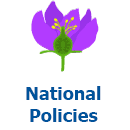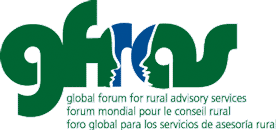Agriculture is a fundamental driver of economic growth and poverty reduction for many developing countries. Past efforts at revitalizing the agriculture sector have failed in part because they overlooked the role of women and the negative effects of gender inequalities on productivity. According to The State of Food and Agriculture (FAO, 2011), “Women comprise, on average, 43% of the agricultural labor force in developing countries, ranging from 20% in Latin America to 50% in Eastern Asia and Sub-Saharan Africa”. Reducing gender inequalities in access to productive resources and services could increase yields on women’s farms by 20–30%, which could raise agricultural output in developing countries by 2.5–4% (FAO, 2011).
 Every country has developed, formulated, and decreed national policies related to rural advisory services. Find some examples here. If you are looking for a national policy from a specific country, please use the search function, selecting the category “National policies” and the tag for the country.
Every country has developed, formulated, and decreed national policies related to rural advisory services. Find some examples here. If you are looking for a national policy from a specific country, please use the search function, selecting the category “National policies” and the tag for the country.
Wednesday, 25 April 2018 17:21
Reducing the Gender Gap in Agricultural Extension and Advisory Services: How to Find the Best Fit for Men and Women Farmers
Written by Ingrid OliveiraDownload here4304 times downloaded
Published in
Recommendations
Tagged under
Latest from Ingrid Oliveira
- Sustainable Undernutrition Reduction in Ethiopia: Training manual for Health and Agriculture Development Armies
- What Every Extension Worker Should Know - Core Competency Handbook
- Sustainable Nutrition Manual Part 3: Healthy Designs
- Sustainable Nutrition Manual Part 2: Healthy Environments
- Sustainable Nutrition Manual Part 1: Healthy Humans


